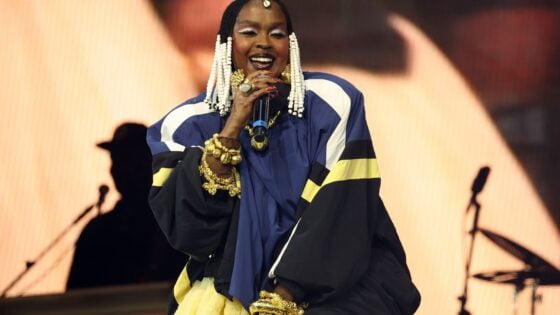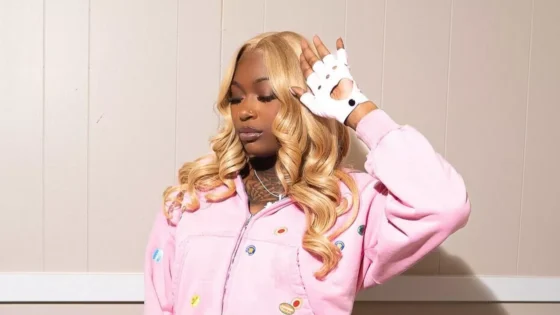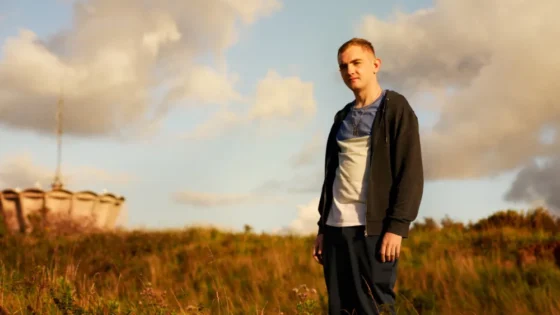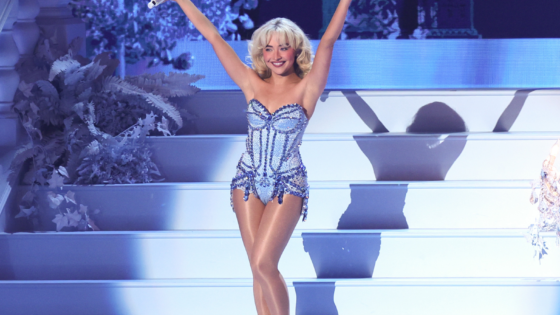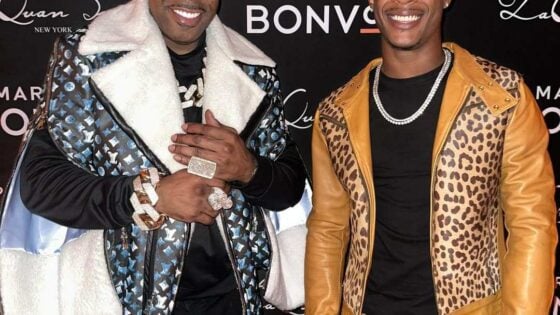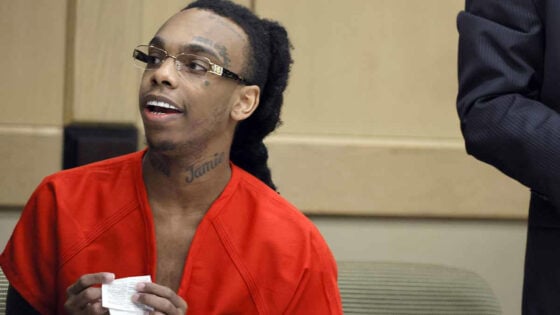Film
Emily Blunt Says She Felt Sick After Kissing Certain Actors While Filming: ‘I’ve Definitely Not Enjoyed Some of It’
Introduction to On Screen Chemistry: Insights from Emily Blunt
Within the realm of the silver screen, the intricate interplay between actors bears profound implications, profoundly shaping their on-screen presence and the convincing authenticity of their portrayal. This intricate notion found candid exploration through the insightful perspectives shared by Emily Blunt during her recent, highly anticipated appearance on The Howard Stern Show, gracing the airwaves on April 30. The esteemed British thespian, a seasoned veteran at the age of 41, generously imparted her invaluable thoughts and experiences. Shedding light upon the intricate complexities in forging palpable on-screen chemistry with fellow co stars, particularly in circumstances less than conducive to cultivating such a connection.
Delving into Professional Relationships and On-Screen Dynamics
Emily Blunt, the accomplished and versatile actress, offered a captivating glimpse into the intricate process of cultivating relationships with her fellow thespians. This endeavor, she candidly revealed to the iconic radio personality Howard Stern, is an integral facet of her artistic journey. One that is pivotal to the success of every film she graces with her presence. In a moment of unguarded candor, Blunt divulged a remarkable truth: the creation of on-screen chemistry is not always a seamless or intuitive process. With refreshing honesty, she acknowledged, “I’ve had chemistry with people I haven’t liked.” This profound revelation serves to underscore the peculiar and often the nature of actor interactions, where personal compatibility and interpersonal dynamics do not necessarily translate into an organic on-screen chemistry.
The Challenge of Unfavorable Co-Star Interactions
As the interview delved deeper, Howard Stern posed a captivating inquiry, probing Emily Blunt about the identities of the co-stars with whom she had experienced challenging interactions. With a touch of discretion, Blunt refrained from divulging any names, simply stating, “I’m not going to reveal that information.” She proceeded to shed light on the intricate nature of these relationships, acknowledging, “There have been instances where I have shared undeniable on-screen chemistry with individuals, despite not having an entirely enjoyable experience collaborating with them off-screen.”

This insightful revelation underscores the reality that often, actors must transcend personal rifts and forge a convincing connection for the sake of their craft, captivating audiences through their performances. The realm of filmmaking is delicate, woven with a myriad of personalities and artistic visions. It is within this dynamic landscape that professionals must navigate the complexities of interpersonal dynamics, where personal preferences and professional obligations mingle.
The Enigmatic Nature of Chemistry in Film
Emily Blunt offers profound insights into this aspect, reflecting on its unpredictable nature. Despite the presence of a seamless rapport between actors off-screen, she notes that this bond does not always manifest itself as anticipated on-screen. Chemistry, she said, is an ethereal force, a mysterious interplay that cannot be artificially manufactured. It is an intangible essence that either exists naturally or remains absent, defying attempts to harness or replicate it artificially.
This perspective illuminates the intricate complexities that underlie the art of filmmaking. Chemistry between performers is a pivotal element, transcending mere technical mastery and scripted dialogue. It is a vital catalyst that breathes life into the narrative, elevating it from a mere sequence of scenes to an emotionally resonant and captivating tapestry.
Building Authentic and Effortless Rapport
In the realm of filmmaking, where the art of storytelling transcends mere visuals, Emily Blunt’s profound insight unveils a fundamental truth: the genuine and effortless connections between actors serve as the cornerstone of cinematic excellence. Her words, “It’s just easier when you have a natural rapport with someone,” resonate profoundly, illuminating the intrinsic power of authentic rapport in elevating a film’s narrative to profound heights.
The magic of cinema lies not solely in crafted scripts or elaborate sets, but in the ability of actors to forge bonds that transcend the confines of the screen.
Crafting Captivating On-Screen Connections
In the captivating realm of cinema, the bond between actors is an indispensable component that can profoundly shape the audience’s immersion and the overall triumph of a film. During an illuminating discourse on The Howard Stern Show, Emily Blunt divulged the distinctive techniques she harnesses to cultivate on-screen chemistry, particularly when a natural rapport with a co-star proves elusive.
Blunt’s perceptive insights unveil a strategic approach to transcending the potential barriers that might hinder genuine connection. She adeptly navigates the delicate art of forging convincing on-screen relationships. Meticulously crafting an atmosphere conducive to seamless artistic collaboration.
Strategies for Cultivating Rapport
In the realm of acting, establishing a genuine connection with co-stars is paramount for delivering compelling performances. Emily Blunt, a celebrated actress renowned for her versatility, has unveiled the techniques she employs to cultivate rapport, even when the initial chemistry might not be immediately apparent. Her approach hinges on actively seeking endearing qualities in her fellow thespians, allowing her to enhance their on-screen interactions and forge an authentic bond.

“I’ve got to find something I love about everybody. I have to find something… Even if it’s one thing,” Blunt candidly shared during her insightful conversation with Howard Stern. This philosophy revolves around the concept of bringing out the positive, no matter how seemingly insignificant, such as appreciating a co-star’s infectious laughter or the way they graciously interact with others on the set. By consciously focusing on these traits, Blunt creates a solid foundation upon which genuine friendship can flourish, transcending any initial barriers. Blunt’s commitment to fostering rapport extends beyond mere professionalism; it is a testament to her dedication to the craft of acting.
Challenges of Forcing On-Screen Chemistry
Despite her unwavering dedication and proactive efforts to ignite an organic connection with her co-stars, Emily Blunt candidly acknowledged the challenges she encountered during her time on various film sets. The accomplished actress disclosed that some of these experiences were nothing short of “downright gross.” A brutally honest revelation that sheds light on the sometimes gritty and unpleasant realities actors must confront in their pursuit of fostering genuine on-screen chemistry. Her candid admission underscores the notion that despite actors’ best intentions and concerted efforts, the desired level of chemistry and comfort may not always be achievable, a stark reminder of the inherent complexities and potential pitfalls of the craft.
The Art of Building On-Screen Connections
In her illuminating discourse, the esteemed actress Emily Blunt unveils the intricate tapestry of forging authentic on-screen bonds within the multifaceted realm of filmmaking. Her approach revolves around a pivotal tenet: cultivating a profound appreciation for the positive attributes that each co-star brings to the creative canvas. This philosophy transcends mere surface level interactions and elevates professional collaborations to a realm of harmonious synergy, where disparate perspectives coalesce into a unified artistic vision.
Blunt’s insightful strategy serves as a beacon, guiding industry professionals through the labyrinth of interpersonal dynamics that arise when diverse talents converge. By embracing a mindset of empathy and understanding, she navigates the treacherous waters of conflict, transforming potential discord into a wellspring of creative inspiration.
Confronting Discomfort in Romantic Scenes
In a remarkably transparent exchange, acclaimed actress Emily Blunt shed light on the intricate dynamics of portraying romantic scenes on the silver screen. During her insightful interview on the renowned Howard Stern Show, the seasoned performer found herself confronted with a thought provoking inquiry from the ever inquisitive host, who sought to unravel the nuances of navigating physical intimacy with co-stars.
Stern, renowned for his approach posed a direct question that cut to the heart of the matter: “Have you wanted to throw up?” Blunt’s response was a resounding affirmation, delivered with candor and authenticity. “Absolutely. Absolutely,” she affirmed, her words resonating with a profound understanding of the complexities inherent in such intimate on-screen moments.
Reflecting on Recent and Upcoming Projects
Recently, Emily Blunt has showcased her remarkable versatility by embodying diverse characters across various genres. Her performances have been nothing short of captivating, leaving an indelible mark on audiences. From embarking on thrilling adventures with Dwayne “The Rock” Johnson in the action packed film Jungle Cruise, to sharing the screen with her husband, John Krasinski, in the gripping thriller A Quiet Place, and portraying a pivotal role alongside Cillian Murphy in the riveting historical drama, Oppenheimer, Blunt has consistently proven her ability to seamlessly transition between vastly different roles.

Each project presented its own unique set of challenges, testing her depth as an actress. With unwavering dedication and professionalism, Blunt immersed herself in the intricacies of every character, crafting distinct personas that resonated with audiences worldwide. Whether portraying a daring adventurer, a protective mother fighting for survival, or a pivotal figure in a momentous historical event.
Promoting “The Fall Guy” and Celebrating Collaborations
In a heartwarming display of friendship, Emily Blunt took the opportunity to commend her esteemed co-star, Ryan Gosling, during her recent appearance on Stern’s renowned talk show. While promoting their highly anticipated action-comedy flick, “The Fall Guy,” Blunt’s words resonated with profound admiration and gratitude for her colleague’s exceptional character.
Extending beyond the realms of professional collaboration, Blunt’s praise Gosling’s personal life, expressing her profound respect for his wife, Eva, and their delightful children. With a genuine warmth, she described Gosling as “a gem of a person,” a testament to the depth of their friendship that blossomed during the filmmaking process. This heartfelt acknowledgment stands in stark contrast to the occasional on-screen experiences that often characterize the dynamic world of Hollywood, underscoring the diverse and multifaceted nature of relationships within the industry.
Anne Hathaway’s Revealing Insights into Past Audition Practices
In a candid revelation, acclaimed actress Anne Hathaway shed light on the disconcerting audition practices in the early 2000s. During her formative years in the industry, Hathaway found herself confronted with situations that, by today’s standards, would be considered potentially unethical. One such practice she disclosed involved casting agents requesting actors to physically demonstrate on-screen chemistry through intimate gestures like kissing during the audition process.
This unsettling revelation from Hathaway’s past serves as a poignant reminder of the significant strides made within the entertainment industry in recent years. As societal norms and professional ethics have evolved, such audition practices have rightly been recognized.
Reflecting on Awkward Professional Demands
Anne Hathaway recounted an unsettling experience that highlights the practices prevalent in the entertainment industry. She shared an incident where she was expected to engage in intimate simulations with numerous potential co-stars in a single day. “During the early 2000s – and this did happen to me – it was considered a standard practice to request an actor to simulate romantic interactions with various other actors to gauge their on-screen chemistry, which is an ineffective and flawed approach,” she revealed. This methodology not only compromised personal boundaries but also imposed unreasonable professional demands, rendering the entire process excessive and unwarranted.
Hathaway’s recollection sheds light on the uncomfortable expectations that actors, particularly women, have historically faced in the industry. The assumption that intimate simulations are necessary to evaluate on-screen chemistry perpetuates a concerning normalization of invasive practices. Furthermore, the demand to engage in such simulations with multiple individuals in a single day amplifies the discomfort and potential for exploitation, creating an unhealthy and unprofessional environment.
Personal Reflections on Difficult Experiences
In a revealing glimpse into her inner world, Anne Hathaway candidly shared her thought provoking perspectives on navigating the intricate realms of professional opportunities interwoven with personal boundaries. The seasoned actress recounted an instance where an initially thrilling proposition unveiled a disconcerting underbelly, sparking a profound exploration of her sentiments.

Hathaway found herself immersed in a situation that seemed promising on the surface, yet upon closer examination, unveiled disquieting undertones. The proposition presented to her was cloaked in an air of excitement: “We have 10 gentlemen scheduled to arrive today, and you have been cast. Aren’t you excited at the prospect of engaging in intimate physical interactions with each one of them?” However, this suggestion did not resonate with Hathaway but instead felt gross.
Navigating the Industry’s Expectations
During that period, Anne Hathaway was exceptionally young and keenly conscious of the nature of her profession, particularly the ease with which one could be branded as “problematic” within the industry. This stark realization compelled her to conceal her genuine emotions and acquiesce to the demands placed upon her. “Consequently, I merely feigned enthusiasm and proceeded with the tasks,” she elaborated. She acknowledged that these requests were not intended as a display of authority or meant to cause harm; rather, they were merely reflective of a profoundly different era in the industry’s evolution.
As a fledgling actress, Hathaway found herself confronted with the formidable expectations and stringent norms that spread through the entertainment realm. The demands placed upon her, while not overtly malicious, carried the implicit threat of marginalization should she fail to comply. This stark reality forced her to suppress her authentic self, faking of excitement and compliance to navigate the treacherous terrain of the industry.
Evolving Standards in the Entertainment Industry
Upon contemplating these accounts, Anne Hathaway observed that such inappropriate and invasive practices for assessing on-screen chemistry between actors have been largely abandoned as the entertainment industry has progressed. This transformative shift in norms reflects a broader societal movement towards more ethical, considerate, and respectful treatment of performers in Hollywood and beyond. The industry’s recognition of the detrimental impact of such objectifying and demeaning methods has catalyzed a cultural shift, leading to the adoption of more professional, empathetic, and effective approaches to gauge the on-screen dynamic between actors.



